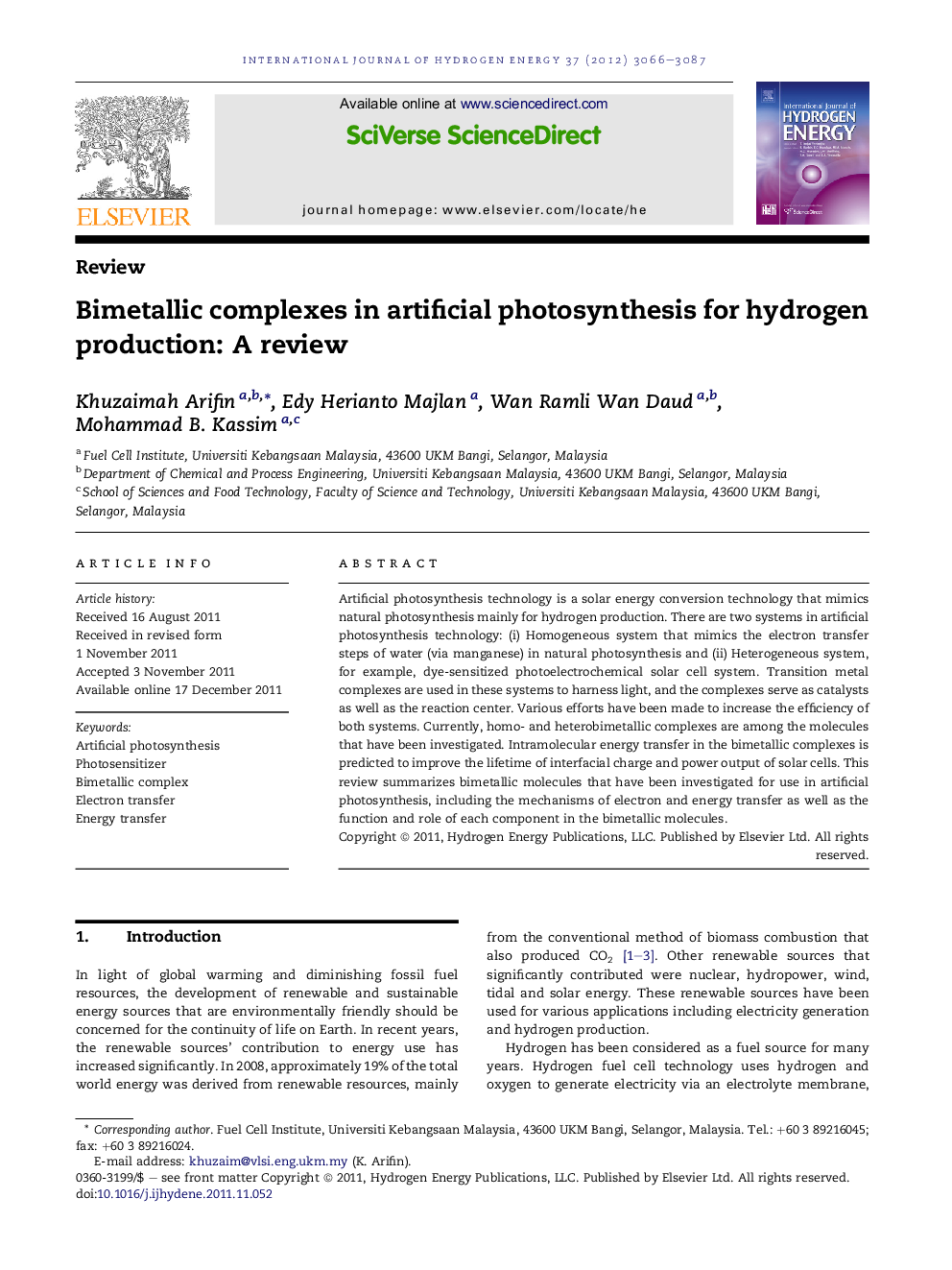| Article ID | Journal | Published Year | Pages | File Type |
|---|---|---|---|---|
| 1282313 | International Journal of Hydrogen Energy | 2012 | 22 Pages |
Artificial photosynthesis technology is a solar energy conversion technology that mimics natural photosynthesis mainly for hydrogen production. There are two systems in artificial photosynthesis technology: (i) Homogeneous system that mimics the electron transfer steps of water (via manganese) in natural photosynthesis and (ii) Heterogeneous system, for example, dye-sensitized photoelectrochemical solar cell system. Transition metal complexes are used in these systems to harness light, and the complexes serve as catalysts as well as the reaction center. Various efforts have been made to increase the efficiency of both systems. Currently, homo- and heterobimetallic complexes are among the molecules that have been investigated. Intramolecular energy transfer in the bimetallic complexes is predicted to improve the lifetime of interfacial charge and power output of solar cells. This review summarizes bimetallic molecules that have been investigated for use in artificial photosynthesis, including the mechanisms of electron and energy transfer as well as the function and role of each component in the bimetallic molecules.
► Artificial photosynthesis is the most promising sustainable hydrogen production. ► This paper summarizes bimetallic complex used in artificial photosynthesis systems. ► Transition metal complex is used for light harnessing and redox catalyst. ► Bimetallic complex expands absorption wavelength.
